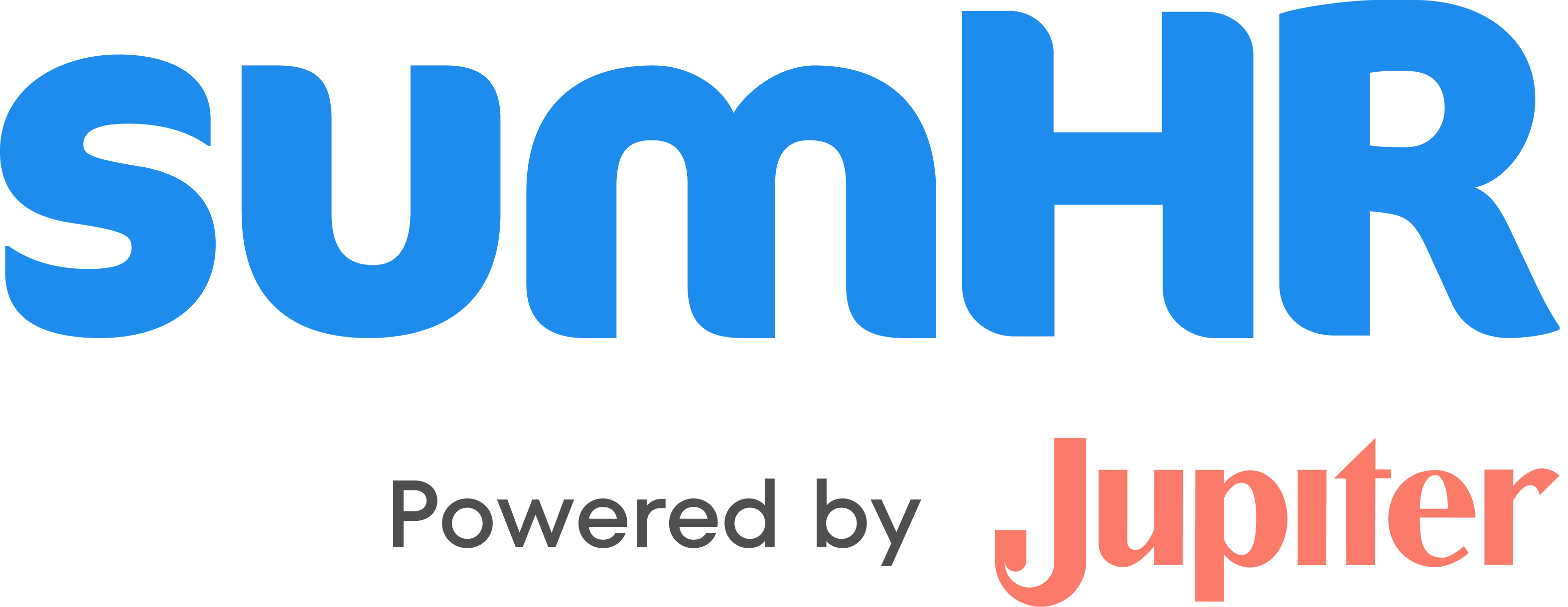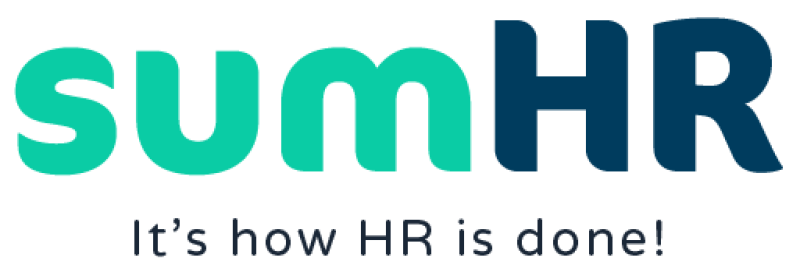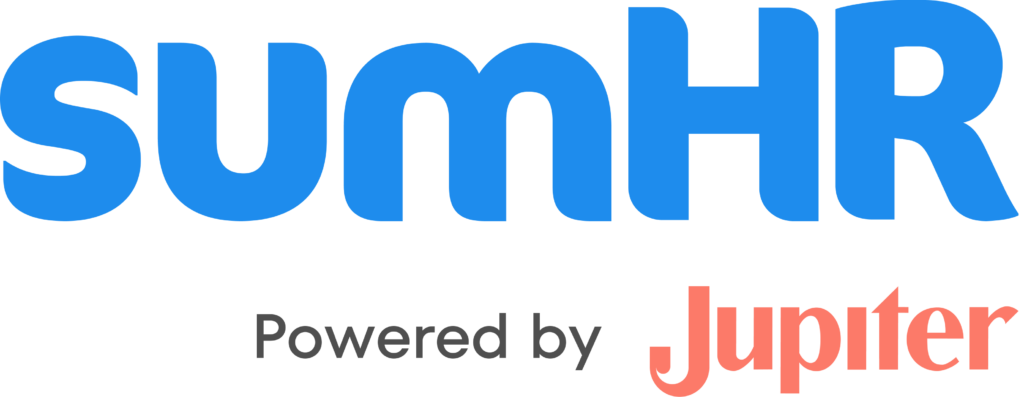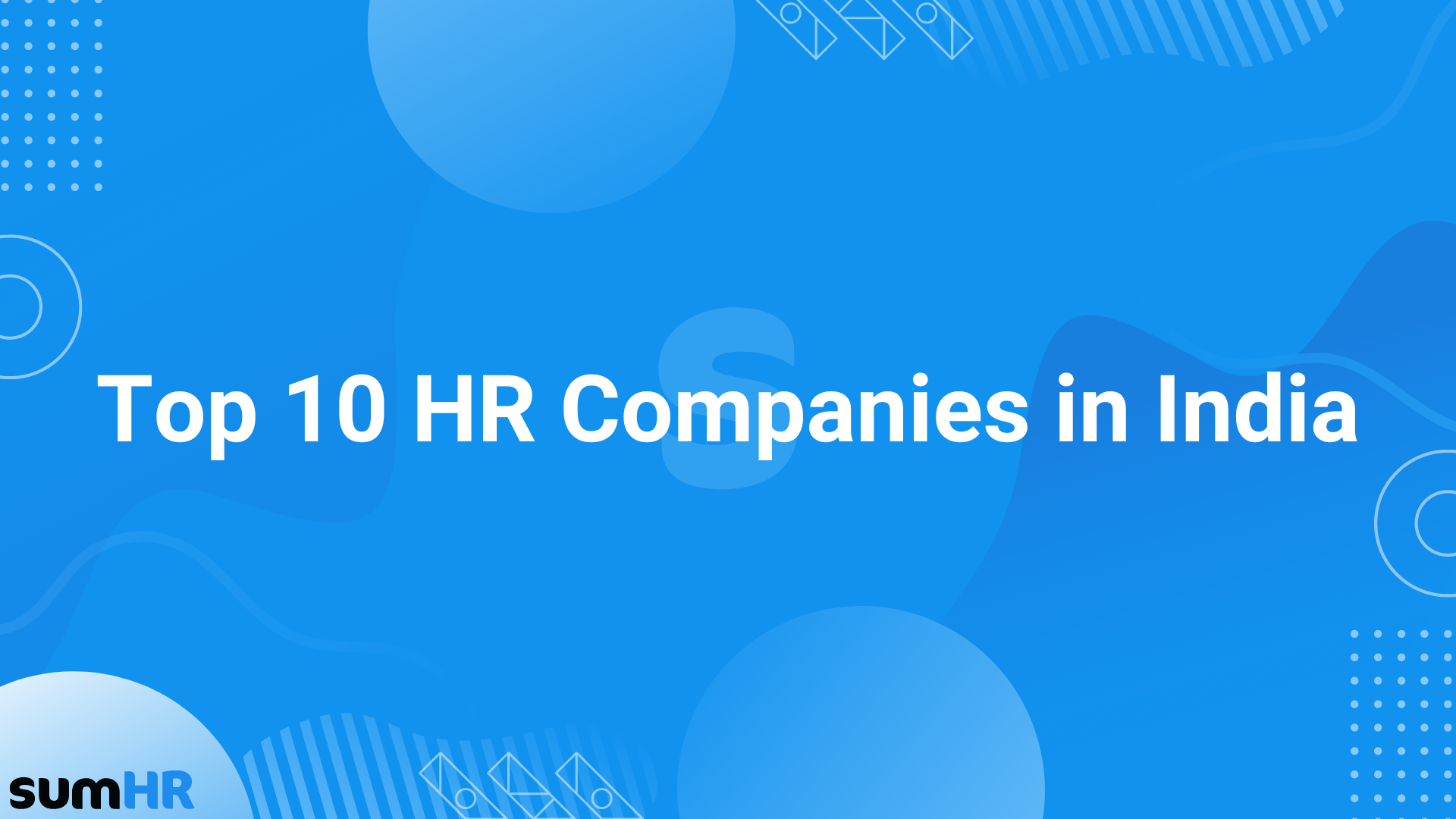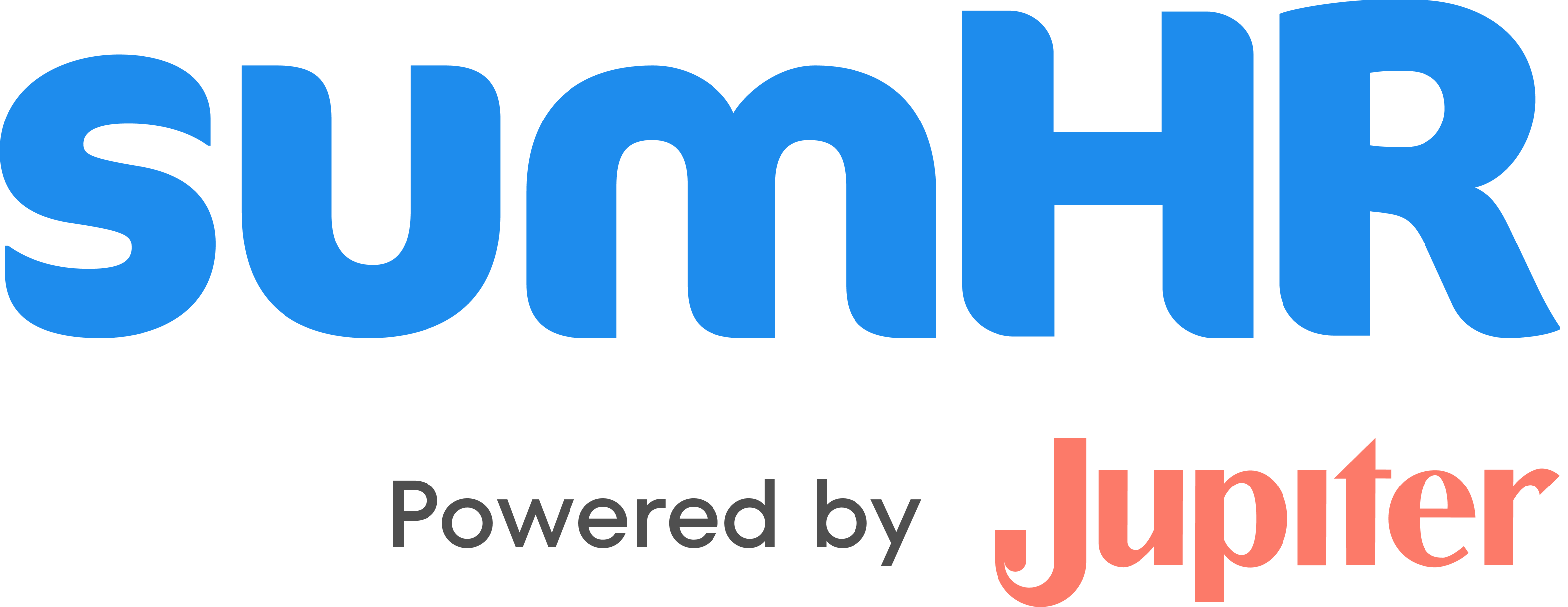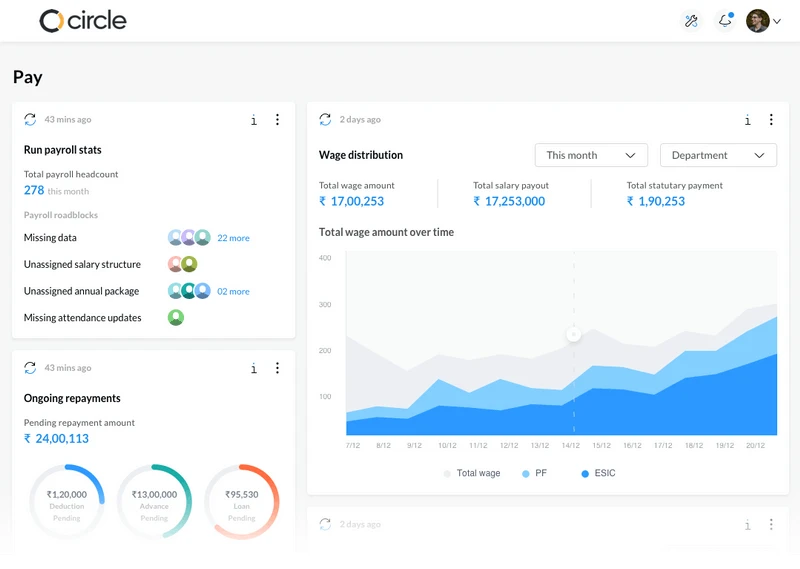Every individual in a company will be in a position to make better decisions if the decisions are based on actual and accurate insights. HR Analytics is one such tool which helps the organization as a whole, to have a look at the stats, charts and numbers.
Human resource analytics, also known as people analytics entails collecting, analyzing, and reporting HR data.
It allows your company to assess the influence of a variety of HR KPIs on overall organizational performance and make data-driven decisions and facilities the business goals.
HR analytics, in other terms, is a data-driven approach to Human Resources Management. This tool also proves pivotal to making the right decisions pertaining to your organization as a whole, and human resource management in particular.
Useful fact about HR analytics: “People analytics is now a top priority for 77 per cent of executives”.
HR analytics' benefits and challenges
From business aspect, large data enables a company to effectively manage its personnel and, in some cases, even increase their performance in order to achieve a higher return on investment.
In this way, HR becomes the organization’s data collector, gathering information on employees, hiring requirements, compensation, attrition, and so on.
However, HR analytics is more than just collecting data on employee productivity. Rather, it tries to provide insight into each process by collecting data and then using that data to take appropriate steps to improve those processes.
1. Understanding the Organization
With the use of HR analytics, you can understand your organization much better, with the stats and insights you can rely upon. It does enable better decision making.
HR analytics assists firms in gaining a better understanding of their workforce and fostering employee trust, resulting in improved employee performance. This enables the organization to improve its performance and gain better understanding.
Measuring HR analytics and converting that data into strategy can help a firm save money, free up time for other activities, and foster a more positive work environment. Embracing HR analytics and becoming more data-driven in one’s approach can help the organization develop .
2. Keeping Up with the Changing World
The world is changing at a fast pace and if you don’t keep up, other companies are going to get ahead. Accurate and insightful analytics helps you decide what changes are needed in your company.
HR analytics are guiding talent, management, and hiring choices for organizations of all sizes and industries in today’s data-driven environment. Metrics in HR are used by many firms to impact how they attract, retain, and compensate people.
This is advantageous because it allows businesses to collect and analyze data that can help them to raise revenues by better understanding and targeting customers along with saving expenses through enhanced business operations.
This ensures your organization is not left out in the race and helps you go toe-to-toe and even ahead of your competition.
3. Hiring the Correct Personnel
While recruiting newer personnel, it is important for a company to decide how the new employee(s) will be able to serve the interest of the company. Each person has specific talents and if these talents are matched with the requirements of the company, it is the perfect combination.
HR analytics may also assist recruiters and hiring managers in determining where they should be looking for candidates for any specific position.
For example, you might utilize data from an HR tech platform to create a recruitment plan if you wanted to hire web developers. Compensation, supply, demand, competition, turnover rates, diversification, and other factors could all be considered for any given region.
HR professionals must get a thorough understanding of the criteria that define a successful hire and incorporate this information into their recruitment strategy.
HR analytics can help you enhance the quality of your employees by ensuring they have the appropriate skill set for the job and even tracking new hire turnover to ensure the correct individuals are supported with the appropriate onboarding processes.
HR analytics assist you in this task too. The insights you derive from it will enable you to determine which areas/departments of your organization require what kind of personnel/skills. This definitely helps in making better and informed hiring decisions.
4. Helping with Employee Efficiency Projections
One of the most exciting features of HR Analytics is making insights-based projections related to employee efficiency vis-à-vis resource investment. For instance, it will help you understand things like “How much time it typically takes for a new employee of “x” department to become a valuable resource for the company? Or even for things like “how much investment (time/money) does it take before getting optimum output from a new recruit?
Many such questions can be answered by looking at the HR Analytics. As you have data that has been collected over a period of time to rely upon and have some data-points to fall back on, better business decisions can be made for the future, with such insight-based projections.
On the contrary, while HR Analytics strategy benefits the business in a variety of ways, it also presents some problems that must be solved in order to get the intended results. Some of the challenges are as follows:
1. Excessively large Data
Excessive data is frequently acquired, resulting in an overwhelming amount of data to interpret and a lack of clarity about which data is more important.
2. Limited data analytics skills
Despite the fact that corporations are advocating the use of analytics solutions in HR operations, most HR professionals’ analytics abilities are weak.
Most of them will also require appropriate additional training in order to master the art of translating data into actionable insights. In most firms, this makes the successful adoption of analytics in HR a challenging and complex undertaking.
3. Data privacy and Data compliance
Data privacy and Data compliance HR professionals must consider privacy while acquiring data on an employee or potential employee, particularly from external sources.
Collecting personal information from employees can get the organization in difficulty at times. When data about an employee or potential employee is acquired, the privacy of such data must be respected, as compromising the employee privacy could land the organization in serious trouble.
4. Data quality and duplicity issues
HR analytics has data quality concerns since organizations have a large volume of data that is difficult to collect, process, and store. Due to the absence of reliable data provided by employees, data obtained may include missing or incorrect attributes.
Duplicate data may exist, or data may be corrupted while being transferred from one source to another. The HR analytics tool delivers findings based on data availability, however if there are issues with data quality, the outcomes may not be as expected.
How can HR analytics be implemented for improved decision making in an organization
Human Resources (HR) is a topic that is constantly growing and evolving, and a lot of it has to do with firms using various HR analytic tools. Many firms are moving toward data-driven and analytics-based HR strategies, while others have yet to recognize the value of data in improving corporate efficiency.
HR practitioners will be able to make data-driven decisions thanks to the use of analytics in HR. This will assist them in transitioning from an operational to a tactical or strategic discipline.
HR Analytics also reveals what is working well and which processes or policies need to be changed, terminated, or added in order to increase income and productivity, allowing a company to plan more successfully for the future.
The 4 main steps that are involved in the implementation of HR analytics trends in an organization are highlighted below:
- Encouraging A culture of data-driven decision-making. In a data-driven decision-making culture, data-driven insights, rather than opinion or instinct, prevails.
- Determine a question you’d like to address. Always remember to be specific and to begin small by establishing an acceptable aim.
- Determine what kind of information you would like to collect, To ensure that data is gathered in a uniform manner, use precise data measurement instruments and software.
- The ability to interpret data and take action, as well as follow up on those actions and their outcomes, is what distinguishes analytics as a really strategic instrument.
Features you should look for in an HR Analytics Software
HR Analytics software enables the managers, employees and the administrators of a company to gain valuable insights based on the data collected.
This is something you can expect in sumHR. We offer a detailed yet easy to understand interface with 3 separate dashboards for Employees, Managers and Admins.

A. Employee Dashboard:
Employee dashboard enables the employees to have a look at the snapshots of their leave statistics, work habits, ranking, etc. Also, the employees can keep a track of the leave status of their colleagues for the respective months, which can help in planning their leaves, as they know when they would have to fill in for their colleagues and when can they take a leave.
B. Manager Dashboard:
As the name suggests, this one is for the managers. An overview of the leaves & attendance of his/her team can be viewed from this dashboard. The information that is displayed in the HR Analytics section, helps managers in identifying the performances of the employees. This further helps the manager in selecting the right employee for the right tasks.
C. Admin Dashboard:
A panoramic view of all the basic HR activities and HR data is provided to the administrators on this page. This dashboard will also display the number of employees on notice and F&F, daily attendees, leave trends, new employees etc.
sumHR provides you with a comprehensive gamut of features and analytics data. With sumHR, you can be assured of the best and reliable analysis of what matters for your organization!
If you want to try our HR Analytics software for your company for free, click here We hope this article helped you in understanding the benefits of an HR Analytics module and how useful it is for taking the correct decisions in your company.
Conclusion
HR Analytics is extremely beneficial to an organization. It gives you the information you need to make strategic goals and decisions, improve company operations, and improve your workers’ working environment.
HR metrics and analytics, if properly applied, can revolutionize the way the Human Resource department operates and make the HR function more attractive. HRs will no longer have to rely on their gut instincts with this data-driven decision method.
HR analytics is leading the way in directing all small and big scale enterprises’ talent, management, and recruitment decisions as the globe moves toward a more data-driven approach.
The addition of data analytics to HR’s operations has greatly enhanced their correctness and increased the efficiency of their functions.
Add Your Heading Text Here
1. What is HR analytics and its importance?
HR analytics is the science of collecting, organizing, and analyzing data linked to HR operations like as recruiting, talent management, employee engagement, performance, and retention in order to make better informed decisions in these areas.
HR departments generate and contain a tremendous amount of common data source every day by utilizing various types of HR software and technologies. Human resources analytics, on the other hand, aims to make sense of this data and turn it into actionable information.
- Efficiency and Performance
- Helps in processes for Recruiting and Hiring
- Improving employee experience, thus leading to Employee satisfaction
- Measuring HR analytics and converting that data into business strategy can help a firm save money, free up time for other activities, and foster a more positive work environment.
2. How does HR analytics help your organization improve?
HR analytics in a business is a crucial aspect for a company’s performance for a variety of reasons. HR analytics may help you enhance your company’s expenditures, operations, and efficiency by obtaining useful data.
- HR analytics can help employers choose and track suitable professional training courses for their staff. During the training, it assesses the effectiveness of the training as well as the cost per participant.
- Employers face difficulty in the recruitment process. By collecting data from prior employee hire sessions, HR analytics process can help in enhancing your hiring process.
- HR analytics can assist you in identifying the qualities that can predict an organization’s performance. As a result, it is preferable to look for talent than to risk making costly and time-consuming blunders.
3 What kind of data is collected with the help of HR analytics
- employee profiles
- high-performer and low-performer performance data
- pay and promotion history
- demographic data
- on-boarding training
- Employee participation and engagement
- Employee Turnover
- Employee retention
If you want to try our HR Analytics software for your company for free, click here.
Additionally if you’re looking for an HRMS with payroll, attendance management system, performance management, HRIS, HR Operations and more get sumHR. Book your free demo now.
We hope this article helped you in understanding the benefits of an HR Analytics module and how useful it is for taking the correct decisions in your company.
